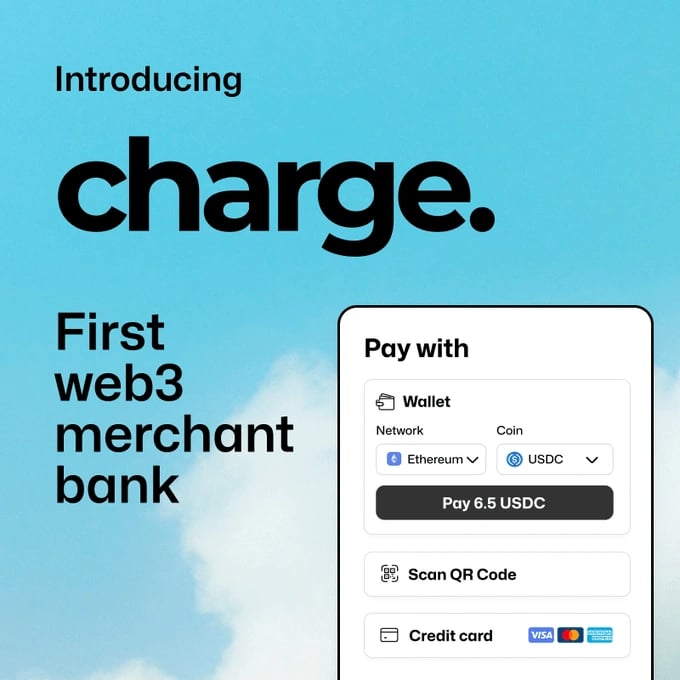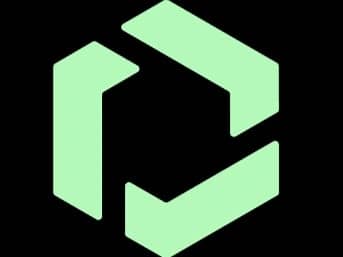위키 구독하기
Share wiki
Bookmark
Fuse Network
Fuse Network
Fuse Network는 블록체인 플랫폼으로, Web3 및 탈중앙화 금융 (DeFi) 애플리케이션을 지원하며 기업 결제 및 블록체인 거래를 간소화하는 도구를 제공합니다. 이더리움과 호환되며 탈중앙화 기술을 탐색하는 개발자와 기업을 위해 확장 가능하고 저렴한 솔루션을 제공하는 것을 목표로 합니다. [1]
개요
Fuse는 기업과 개발자의 Web3 접근성을 향상시키는 이더리움(Ethereum) 호환 플랫폼으로, 결제 및 블록체인 거래를 간소화합니다. 블록체인 통합을 추구하는 Web2 기업부터 Web3 기반 프로젝트까지 다양한 사용자를 지원합니다. 개방적이고 분산된 네트워크를 통해 누구나 거래를 하고, 검증자 노드를 운영하고, 애플리케이션을 구축할 수 있습니다. EVM 호환이므로 다른 이더리움 기반 체인에서 애플리케이션을 원활하게 배포할 수 있으며, 계정 추상화, SDK 및 API와 같은 도구를 제공하여 효율적인 개발자 환경을 제공합니다. 빠른 확인 시간과 낮은 거래 비용으로 다양한 애플리케이션에 적합하며, 네이티브 토큰인 FUSE는 거래 수수료를 지원합니다. 이 네트워크는 Polygon CDK 상의 2계층 플랫폼인 Fuse Ember로 발전하여 더 높은 처리량, 더 낮은 비용, 개인 정보 보호 강화 및 Polygon 체인 간의 상호 운용성을 제공할 계획입니다. [2]
특징
퓨즈 브리지
퓨즈 콘솔을 통해 접근 가능한 퓨즈 브리지는 퓨즈 네트워크와 이더리움, 폴리곤, 아비트럼, 옵티미즘, 베이스, BNB 체인, 솔라나와 같은 다른 네트워크 간의 자금 이체를 가능하게 합니다. FUSE, USDC, USDT, WETH와 같은 자산을 지원합니다. 또한 바이낸스, 코인베이스, 쿠코인, 후오비 글로벌과 같은 중앙화 거래소로부터의 브리징도 가능합니다. 올브리지(Allbridge)는 EVM 호환 및 비-EVM 블록체인 간의 안전한 크로스체인 전송을 제공하여 사용자가 솔라나에서 퓨즈 네트워크로 자산을 이동할 수 있도록 합니다. 레이어스왑(Layerswap)은 중앙화 거래소, 블록체인, 및 지갑 간의 저렴하고 즉각적인 자산 전송을 제공하여 사용자가 중앙화 거래소에서 퓨즈로 자금을 브리징할 수 있도록 합니다. [3]
Fuse Explorer
Fuse Explorer는 Fuse Network 및 Blockscout 기반의 다른 체인을 위한 오픈소스 블록 탐색기입니다. 사용자는 블록, 계정, 잔액 및 토큰 전송을 추적할 수 있으며 블록체인 데이터에 대한 API 액세스를 제공하여 계약 인증 및 트랜잭션 태깅을 가능하게 합니다. Blockscout는 멀티체인 탐색을 지원하며 블록, 트랜잭션, 주소, 앱 및 지갑에 걸쳐 여러 체인을 검색하고 상호 작용하는 도구를 제공합니다. [4][5]
FuseBox
FuseBox는 Fuse 네트워크(Fuse Network) 상의 오픈소스 Wallet-as-a-Service 플랫폼으로, 계정 추상화(Account Abstraction)를 활용하며 ERC-4337 표준을 준수합니다. Fuse에서 애플리케이션 개발에 필요한 이 플랫폼은 개발자가 번들러(Bundler)를 사용하여 UserOperation을 수집하고 페이마스터(Paymaster)를 사용하여 가스 수수료를 충당할 수 있도록 하여 가스리스 사용자 환경을 제공합니다. TypeScript 및 Dart SDK를 통해 기능에 접근할 수 있으므로, 직접 RPC 호출이나 노드 서비스 제공자 없이 Fuse 블록체인과의 상호 작용을 간소화합니다. FuseBox 백엔드는 NestJS 프레임워크를 사용하여 구축되며, ERC-4337 스마트 계약, 페이마스터, 번들러 및 추가 NodeJS API 엔드포인트를 포함합니다. [6][7]
Charge
Charge는 중소기업(SMB)을 위한 비수탁형 Web3 상거래 은행으로, 암호화폐 및 법정화폐 결제, 청구서 생성 및 국경 간 거래 관리를 위해 설계되었습니다. 0.5%의 고정 거래 수수료를 적용하는 투명한 가격 책정, Shopify 및 WooCommerce와 같은 플랫폼과의 API 통합, 다중 통화 지원을 통해 Charge는 안전하고 실시간으로 거래를 처리하는 동시에 기업이 자산을 완벽하게 제어할 수 있도록 합니다. [8][9]
Charge는 Web3을 채택하는 기업의 진입 장벽을 낮추는 것을 목표로 하며, 매끄러운 암호화폐-법정화폐 통합, 청구서 발행, 자동 청구 및 노코드 솔루션과 같은 기능을 제공합니다. 이 플랫폼은 SMB의 결제 및 자산 관리를 간소화하여 Web2에서 Web3으로의 전환을 지원하며, 복잡한 설치나 수탁 요구 사항 없이 탈중앙화 금융에 참여할 수 있도록 지원합니다. [8][9]

Voltage Launchpad
Fuse 네트워크의 Voltage Finance의 일부인 Voltage Launchpad는 초기 유동성을 제공하고 Fuse의 참여도 높은 커뮤니티를 활용하며 스마트 계약을 통해 안전한 자금 조달을 보장함으로써 DeFi 프로젝트 출시를 용이하게 하도록 설계되었습니다. Launchpad를 통해 프로젝트는 Fuse 생태계 내에서 자본에 접근하고 노출도를 높일 수 있으며, 투명성을 우선시하고 사기 위험을 최소화하는 자금 조달 메커니즘을 갖추고 있습니다. VOLT를 스테이킹하여 veVOLT를 얻은 사용자는 프로젝트 출시 시 더 큰 할당량으로 보상받아 충성도와 적극적인 참여를 유도합니다. 각 출시 전에 veVOLT 잔액이 평가되며, 보유량이 많은 사용자는 더 큰 할당량을 받을 수 있고, veVOLT를 보유하지 않은 사용자는 더 낮은, 상한선이 있는 할당량을 받습니다. [10]
거버넌스
Fuse 네트워크 거버넌스는 현재 검증자와 Fuse 재단이 담당합니다. 검증자는 Fuse 개선 제안(FIP)에 대해 투표하며, 네트워크 지분에 관계없이 각 검증자는 한 표를 갖습니다. 한편, Fuse Network Limited가 운영하는 Fuse 재단은 핵심 프로토콜과 미분배 FUSE 재무를 관리하고, 프로토콜 업데이트, 인프라 개발 및 네트워크 성장 이니셔티브를 처리하기 위해 프로젝트 팀을 운영합니다. 프로젝트 팀은 네트워크 생태계, 채택 및 파트너십 향상을 위해 노력하지만, 개발자는 Fuse 재단의 허가 없이도 Fuse 기반으로 개발할 수 있으며, 이는 Fuse의 분산형 프레임워크를 반영합니다. [11]
FUSE
Fuse 토큰(FUSE)은 Fuse 네트워크 내에서 다양한 기능을 수행합니다. 거래 수수료 (가스) 지불에 사용되며, 네이티브 통화로 스마트 계약 상호 작용을 피하여 저렴한 비용으로 전송할 수 있게 합니다. 토큰 보유자는 FUSE를 스테이킹하여 검증자가 될 수 있으며(최소 100,000 FUSE), 스테이킹 또는 위임된 FUSE를 기반으로 프로토콜 투표에 참여하고, 검증자에게 위임하여 스테이킹을 통해 보상을 받을 수 있습니다. 블록 보상에서 검증자에게 최소 15%의 수수료가 지급됩니다. FUSE의 총 공급량은 377,576,911개입니다. [12]
Fuse Ember
Fuse Ember는 2025년 초 출시 예정이며, 2계층 솔루션으로 기업 결제 및 탈중앙화 금융 (DeFi, 디파이)의 확장에 중점을 둡니다. Fuse Network에서 zkEVM 기술을 통해 향상된 속도, 확장성 및 개인 정보 보호 기능을 제공합니다. 출시는 세 단계로 진행됩니다. 이더리움 (Ethereum) 표준을 EVM 개선 사항과 함께 업그레이드하고, 토큰 경제를 업데이트하여 검증자 효율을 높이고 인플레이션을 제거하며, 제로지식 증명 (Zero-Knowledge Proofs, ZKPs)과 zkEVM을 통합하여 확장성, 개인 정보 보호 및 기능을 향상시킵니다. 궁극적으로 사용자, 개발자 및 기업을 위한 더 효율적인 환경을 조성하는 것을 목표로 합니다. 2계층 이더리움 (Ethereum) 체인으로서 Fuse Ember는 트랜잭션 처리량을 높이고 비용을 절감하여 확장성을 향상시키는 것을 목표로 하며, 보안은 유지합니다. Polygon CDK 기반으로 구축되며, 데이터 가용성을 위한 DAC, 크로스체인 통신을 위한 AggLayer, 그리고 효율적이고 안전한 트랜잭션과 이더리움 (Ethereum)과의 원활한 상호 운용성을 제공하는 zkRollup 기술 등의 기능을 포함합니다. [13][14]
stFUSE
수익 공유 토큰인 stFUSE는 Fuse Ember의 새로운 스테이킹 모델의 기반으로, 이전의 SFUSE를 대체하여 Fuse 스테이커에게 지속 가능하고 가치를 유지하는 경험을 제공합니다. FUSE의 장기적인 가치에 영향을 미쳤던 이전의 인플레이션 모델과 달리, 새로운 모델은 네트워크의 실물 자산(RWA) 및 유동적 스테이킹 토큰(LST)에서 수익을 창출하며, 노드 판매, 시퀀서 수수료 및 기타 네트워크 활동으로부터 발생하는 수익을 공유합니다. 유동적 스테이킹을 통해 보상이 자동으로 복리로 적용되어 수익률이 향상되는 동시에 DeFi 내에서 자산 유연성을 확보할 수 있습니다. 이 모델은 프로젝트에서 생성된 수수료를 공유함으로써 네트워크 성장과 스테이커의 이익을 일치시키고, 경쟁력 있고 안정적인 거버넌스를 위해 위임 민주주의를 통합합니다. [15]

토큰 경제학 2025
2025년 출시 예정인 Fuse Ember는 단계적으로 출시되며, 기존 FUSE 토큰은 4억 2천만 개의 stFUSE 토큰으로 구성된 제로 인플레이션 고정 공급 기반의 Fuse Ember 생태계로 점진적으로 마이그레이션됩니다. 이 마이그레이션은 유동적 스테이킹 및 DA 노드 운영자에 대한 투표 위임을 통한 향상된 보안, 디플레이션 구조를 갖춘 지속 가능한 경제 모델, 그리고 노드 판매 및 시퀀서 수수료에서 발생하는 stFUSE 보유자를 위한 수익 공유 등 여러 가지 이점을 제공합니다. 또한 원활한 DeFi 및 스테이킹 접근을 가능하게 하고, stFUSE 보유자가 정책 결정에 참여하고 DA 노드 운영자를 선출할 수 있도록 함으로써 커뮤니티 중심의 거버넌스를 촉진합니다. [16]
파트너십
- Polygon (폴리곤)
- Avail (어베일)
- Gelato (젤라토)
- Voltage (볼티지)
- Freedom (프리덤)
- SushiSwap (스시스왑)
- Thirdweb (써드웹)
- LayerZero (레이어제로)
- The Graph (더 그래프)
- Push Protocol (푸시 프로토콜)
- Kinnect (키넥트)
- Radius (레이디우스)
- Orbiter Finance (오비터 파이낸스)
- Palmera (팔메라)
- Lava (라바)
- Hyperlane (하이퍼레인)
- Shimi Cash (시미 캐시)
- Kima Network (키마 네트워크)
- claimr (클레임알)
- CoindPay (코인드페이)
- Shoebill Finance (슈빌 파이낸스)
- Meridian Finance (메리디안 파이낸스)
- Etherspot (에더스팟)
잘못된 내용이 있나요?
